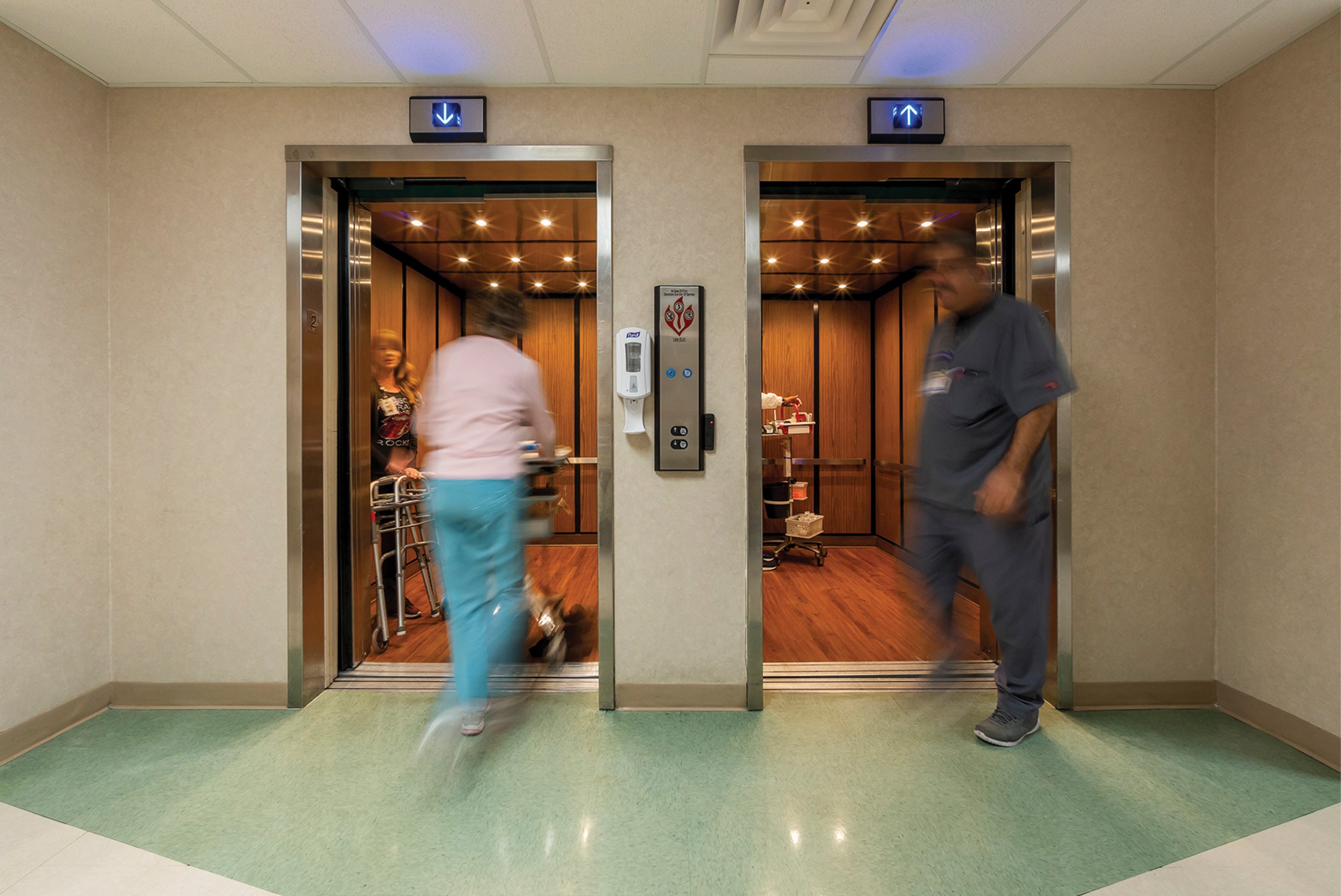Upgrading infection control features in elevator systems
The COVID-19 pandemic has exposed the need for a more in-depth look at the different ways to ensure staff, visitors and patients remain safe while they are utilizing vertical transportation systems.
The immediate response is to provide frequent cleaning for high-touch areas. While this helps, it’s impossible to ensure that cleaning will occur immediately after an infected person leaves the elevator lobby or cab. The cost to carry out such high-frequency cleaning may make it impractical, and many of the chemicals used to disinfect surfaces can have negative effects on elevator finishes.
Installation of antimicrobial touch surfaces is also a popular means of dealing with car operating panels, hall stations, and elevator and escalator handrails, but they are not made to fit every system.
In low-rise applications, elevators have been restricted to permit only those who require elevator ridership to be able to move floor to floor in accordance with Americans with Disabilities Act requirements. However, managing these requirements can be invasive and has the potential to create bottlenecks.
Touchless options for controls have been explored and several innovations have been brought forth with differing levels of success. The simple end of the spectrum is to program elevators to stop on every floor. Elsewhere, voice recognition is being tested in multiple venues, but it does not work well with a transient population as found in hospitals. Finally, foot-operated elevator controls have gained popularity for low-rise elevators, but many riders in a transient environment are confused by the system and will revert to using traditional hall stations and car operating panels.
In fact, some of the most effective areas to look at for infection control are systems that require no interaction with riders. The most effective defense against airborne pathogens is active filtration systems that replace the existing elevator exhaust fans and add the capability to filter out contaminants from not only the elevator cab environment but also the hoistway. UV light is another popular option that is under consideration for cleaning cab interiors. UV systems for elevator cabs need to be highly engineered to ensure complete coverage and that they will not damage interior finishes. There should also be safety measures in place to keep harmful UV spectrums from contacting riders.
When considering the best ways to keep elevators safe for riders, it is important to consider all options and utilize a custom solution that can include multiple measures to ensure the desired performance at a reasonable first cost and a manageable cost of ownership.


